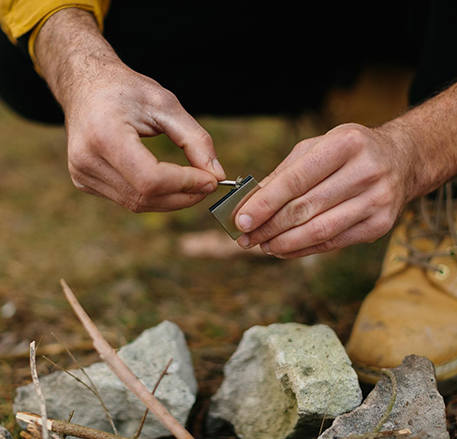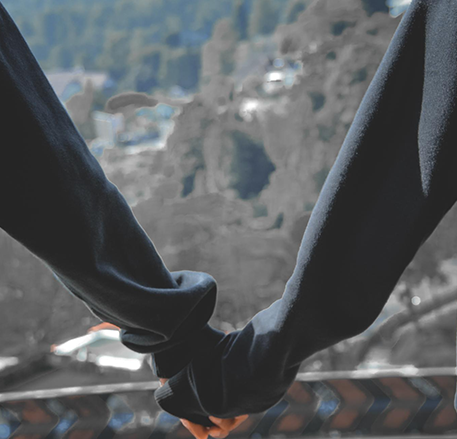Table of Contents

Survival on the Silver Screen vs. Reality: How “Stranded: The South Pacific” Portrays Realistic Survival Skills
Imagine yourself stranded on a remote island in the South Pacific. You’re alone, far from civilization, with only the resources the island offers to survive. It sounds like the perfect setting for a gripping survival story, doesn’t it. Stacey Gardner’s Stranded: The South Pacific dives deep into this scenario, following two characters who are forced to rely on each other to stay alive. While the novel brings the harrowing experience of survival to life, it also raises the question: how realistic are the survival tactics depicted in the story compared to real-life survival techniques?
In Stranded: The South Pacific, the two protagonists face everything from navigating harsh weather conditions to foraging for food and water. As the plot unfolds, readers’ witness the characters adapt, improvise, and, at times, struggle to stay alive. The gripping survival story is a test of human resilience and adaptability, but how does it stack up against the methods survival experts actually recommend? Let’s break down the survival skills showcased in the novel and compare them with the real deal.
Finding Fresh Water
In Stranded: The South Pacific, one of the first and most crucial survival challenges is finding fresh water. The characters attempt to catch rainwater and use makeshift containers to store it. In reality, freshwater is one of the most difficult resources to find on a deserted island. Gardner’s depiction of catching rainwater is realistic — when stranded on an island, rainwater is often the best and immediate solution. However, experts emphasize that collecting water in clean, non-contaminated containers is key, as even rainwater can carry pollutants. Survival experts suggest using clothing or natural materials like leaves to filter out debris before consumption.
In extreme circumstances, if rainwater isn’t available, the novel’s characters would need to resort to methods like digging for underground freshwater or using a solar still to distill saltwater. In real-life survival situations, these techniques are not just suggested, they are often necessary. It’s interesting that Gardner focuses on rainwater collection because in a real survival scenario, freshwater scarcity can be a matter of life and death.
Foraging for Food
Another survival skill heavily featured in the novel is foraging. The characters make use of the natural environment, hunting for small animals, fishing, and scavenging edible plants. While this sounds like a great survival skill, the truth is, foraging for food in the wild is far from simple. In the novel, the protagonists seem to have an intuitive grasp of what’s safe to eat, but in reality, misidentifying plants or consuming undercooked meat can be deadly.
Survival experts recommend extensive knowledge of local plant life and animal species before embarking on any expedition into the wilderness. Some edible plants and berries might look inviting but are toxic if eaten raw or unprepared. The novel’s portrayal of fishing is slightly more realistic, as the characters attempt to use rudimentary tools like improvised spears or nets to catch fish. However, experts suggest that fishing in such a manner requires skill, patience, and the right conditions — none of which are guaranteed on a deserted island.
Building Shelter
Shelter is an essential component of survival, especially when dealing with the elements. In Stranded: The South Pacific, the characters construct a shelter out of leaves, branches, and other natural resources. In real-life survival scenarios, building a shelter is one of the first tasks on the survival list. A shelter protects you from harsh weather conditions, keeps insects at bay, and provides you with a sense of security.
While the novel highlights the characters making use of their environment in a makeshift way, survivalists recommend certain techniques for constructing shelters. For example, the “lean-to” structure, made from branches and covered in foliage, is one of the most effective. A shelter needs to be insulated to protect from cold nights and should be built in a safe location, away from predators and rising tides. The characters in Stranded seem to build their shelter relatively easily, but in reality, this task would take time and careful planning to ensure safety and comfort.
Fire Starting
No survival story is complete without fire. In the novel, the characters use a method to spark a fire using rocks or friction. Fire is critical for warmth, cooking food, purifying water, and even signaling for help. The portrayal of fire starting in Stranded is one of the more realistic aspects of the story, as the characters struggle to light a fire with limited resources — something that any survivor would likely face on a deserted island.
However, in real survival situations, fire starting can be far more challenging. It requires proper tools, dry tinder, and an understanding of the environment. Survival experts recommend carrying fire-starting tools, such as waterproof matches or a ferrocerium rod, to improve the chances of success. In Stranded, the characters’ ability to build a fire is portrayed as a bit too easy, given the elements and resources available.
Mental and Emotional Survival
Perhaps the most realistic aspect of the novel, however, is the mental and emotional survival required in such extreme conditions. Stranded: The South Pacific focuses not only on the physical demands of survival but also on the psychological toll that isolation and danger can have on the characters. The tension between the two main characters, who initially don’t like each other, and the eventual development of a romantic relationship, reflects the mental resilience needed to cope with the stresses of survival. In reality, isolation, fear, and exhaustion can cause a person’s mental state to deteriorate quickly. In fact, mental resilience is just as important as physical survival skills.
Survival experts emphasize the importance of staying calm, focused, and positive in life-threatening situations. The psychological aspect of survival — maintaining hope, making strategic decisions, and working as a team — can be the difference between life and death. This is an area where Stranded: The South Pacific truly shines, illustrating the human element of survival that many survival stories overlook.
Conclusion
While Stranded: The South Pacific is a gripping and engaging survival story, its depiction of survival techniques is not always entirely realistic. Some aspects, such as foraging for food and collecting freshwater, are presented in a somewhat simplified manner, while others, like building shelter and starting fire, are more in line with expert recommendations. Still, the novel succeeds in highlighting the true essence of survival — adaptability, mental strength, and teamwork.
In the end, while it’s exciting to read about the characters’ resourceful efforts on the island, it’s important to remember that real-world survival requires both practical knowledge and the mental fortitude to endure extreme challenges. Whether in the wilds of the South Pacific or the comfort of your own home, Stranded: The South Pacific reminds us that survival isn’t just about physical prowess — it’s about staying alive, no matter the odds.



